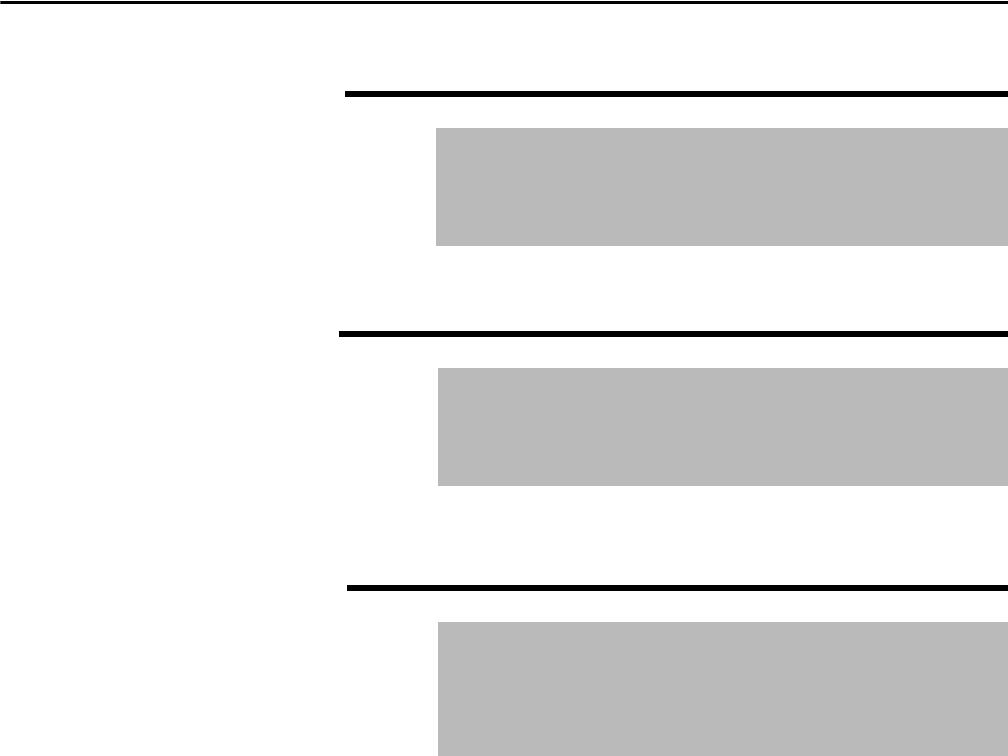Owner's manual
Table Of Contents
- Front Cover
- Important User Information
- Summary of Changes
- Table of Contents
- Introduction
- About the Drive
- Identifying the Drive by Cabinet Assembly ID Number
- LiquiFlo 2.0 Drive Component Locations
- Identifying the Power Module by Model Number
- AC Line I/O Board Description (Frame 3 Only)
- Standard I/O Board Description (Frame 3 Only)
- Combined I/O Board Description (Frame 4 Only)
- DPI Communication Ports
- Optional Equipment
- Planning the Installation
- Mounting The Power Module and Grounding the Drive
- Installing Input and Output Power Wiring
- Completing the Installation
- Using the Start-up Routines
- Programming Basics
- Parameter Descriptions
- Troubleshooting the Drive
- Verify that the DC Bus Capacitors are Discharged Before Servicing the Drive
- Determining Drive Status Using the Status LEDs
- About Alarms
- About Faults
- Diagnostic Parameters
- Common Symptoms and Corrective Actions
- Replacement Parts
- Board Replacement, Firmware Setup Procedures
- Troubleshooting the Drive Using the OIM
- Checking the Power Modules with Input Power Off
- Technical Specifications
- Using the OIM
- Installing and Removing the OIM
- Display Description
- OIM Menu Structure
- Powering Up and Adjusting the OIM
- Selecting a Device in the System
- Using the OIM to Program the Drive
- Monitoring the Drive Using the Process Display Screen on the OIM
- Displaying and Changing the OIM Reference
- Customizing the Process Display Screen
- Customizing the Function Keys
- Controlling the Drive From the OIM
- LiquiFlo 2.0 Drive Frame 3 Wiring Diagrams
- LiquiFlo 2.0 Drive Frame 4 Wiring Diagrams
- Index
- Back Cover

Rockwell Automation Publication D2-3518-3 - May 2013 169
Chapter 9
The allowed level of imbalance in input current entered as x.x%.
An Input I Imbalance fault (fault 225) is generated if Line I Imbalance (22) is
greater than I Imbalance Limit (62) for this amount of time.
If Ride Through Ena (64) is set to Disabled, then any interruption in input
power or AC line synchronization causes an immediate AC Line Lost fault
(fault 227).
If Ride Through Ena (64) is set to Enabled, then any interruption in input power
or AC line synchronization causes the rectifier to enter its standby state and start
its ride through timer. If the ride through timer expires before the input/
synchronization loss ends, the Ride Thru Abort fault (fault 221) occurs. If the
input power/synchronization loss ends before the ride through timer expires, the
rectifier leaves Standby and re-enters its normal running state.
The ride through timer of the rectifier expires when it reaches the value in Ride
Through Sec (65).
Note that the ride through timer of the rectifier is independent of the power loss
timer of the inverter, and that the inverter generally enters its power loss state and
starts its power loss timer as soon as the rectifier enters the Standby state and
starts its ride through timer.
62 I Imbalance Lmt
Range: 0.0...40.0% [0.1%]
Default: 30.0
Access: 0 Path: Configuration > AC Line
See also: 22, 63
63 I Imbalance Time
Range: 1.0 to10.0 seconds [0.1 seconds]
Default: 10.0
Access: 0 Path: Configuration > AC Line
See also: 22, 62
64 Ride Through Ena
Range: 0 = Disabled
1 = Enabled
Default: 0 = Disabled
Access: 0 Path: Configuration > AC Line
See also: 65, inverter 184, 185










